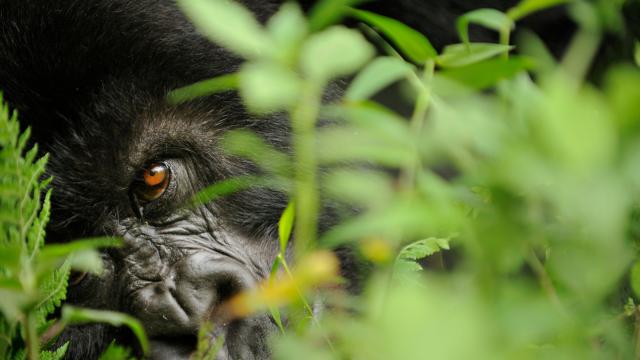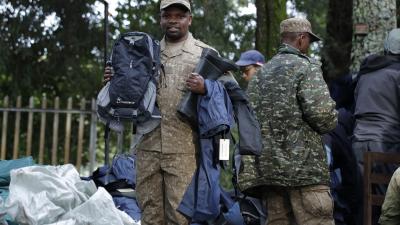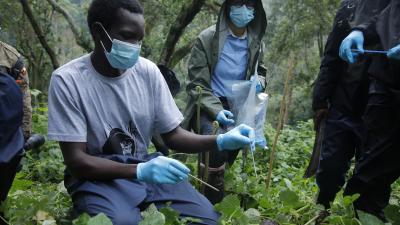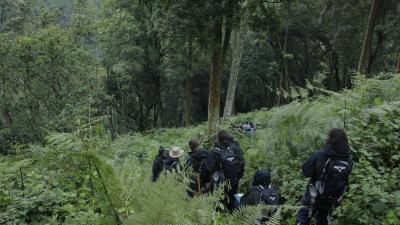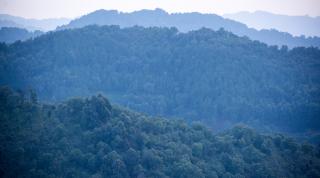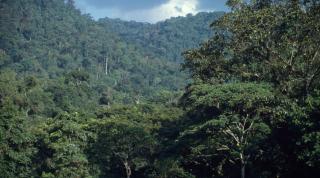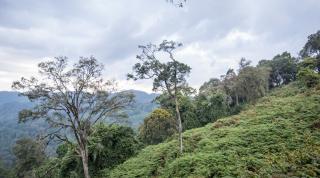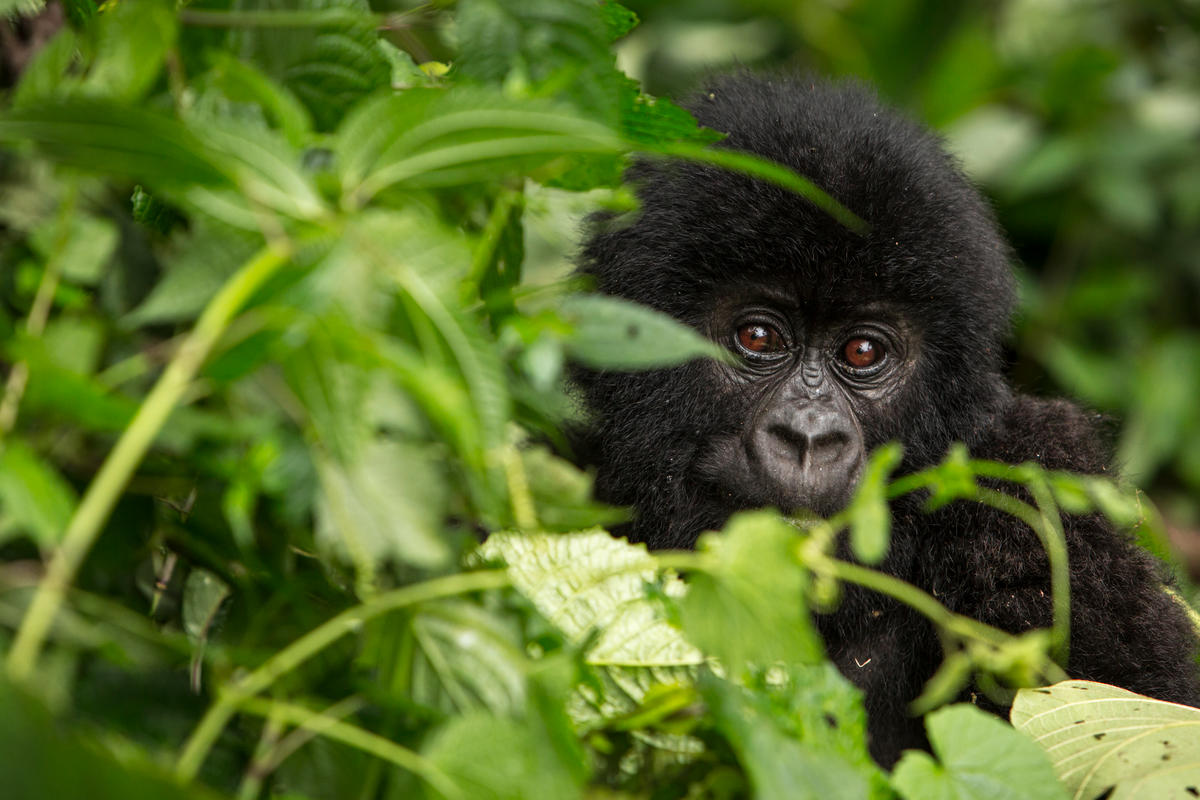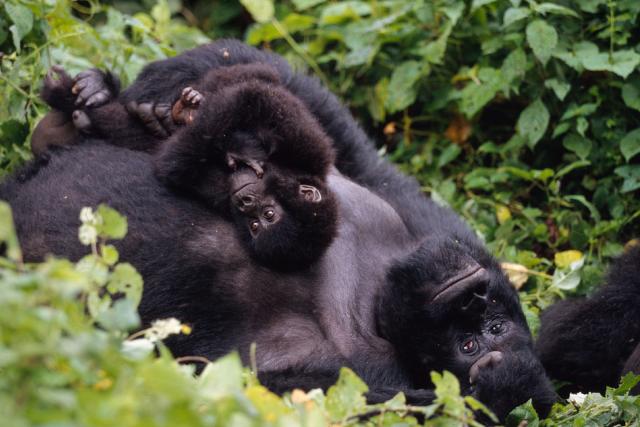
The issue
Mountain gorillas have only one home: a network of parks crossing Rwanda, Uganda and the Democratic Republic of the Congo. An estimated 1,063 mountain gorillas are known to remain in the wild today. In the early 1980s, it was estimated that there was a global population of less than 400 of these great apes, who share around 98% of our DNA, in the wild. Today, they are still endangered and need our help.
The biggest threat to mountain gorillas is the loss and degradation of the forest they call home. People often rely on the forest and its resources to meet their needs, but this can have negative impacts on mountain gorillas. Forest is lost to make way for agriculture and the use of natural resources, like fuelwood, can damage the habitat.
Other threats like disease spread from humans, human-wildlife conflict and climate change all pose a risk to the survival of the world’s last remaining mountain gorillas.
With so few left, their survival depends on support from local communities, governments and dedicated conservationists, all working across multiple countries to protect their one and only home.
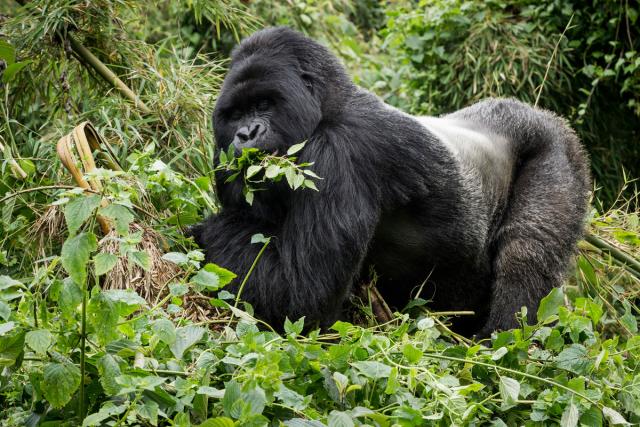
The Solution
In 1991, WWF co-founded the International Gorilla Conservation Programme (IGCP) to ensure the long-term survival of mountain gorillas. IGCP is a coalition of conservation organisations – WWF, Flora & Fauna, and Conservation International – working together with local communities and Protected Area Authorities. This unique partnership works internationally to protect mountain gorillas and their home in the forest.
IGCP coordinates a collaborative effort to undertake a mountain gorilla census every 5-10 years. This helps to estimate how many mountain gorillas there are in the wild. As well as the census, and through IGCP, we support community engagement programmes, and training for Protected Area Authority rangers to detect and remove snares, which can unintentionally hurt or even kill mountain gorillas. IGCP also works with local governments to strengthen the ways they manage national parks where mountain gorillas live, helping to protect vital gorilla habitats.
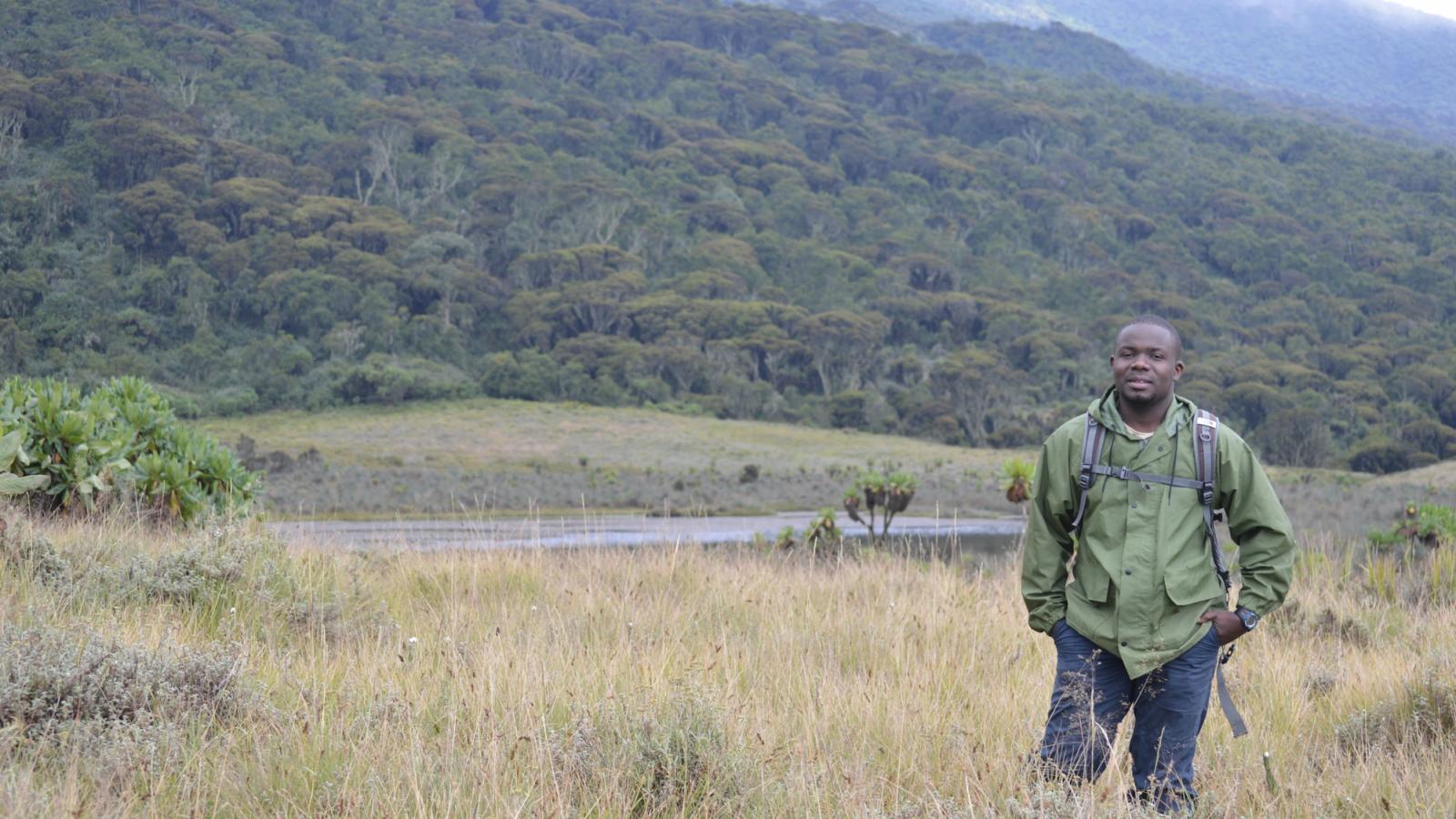
“My hopes for the census are that it will provide us with the current status of the mountain gorilla population in the Bwindi-Sarambwe ecosystem, specifically whether the population is increasing or at least stable. This is a metric to evaluate all conservation efforts over the last years and guide future strategies for mountain gorilla conservation.”
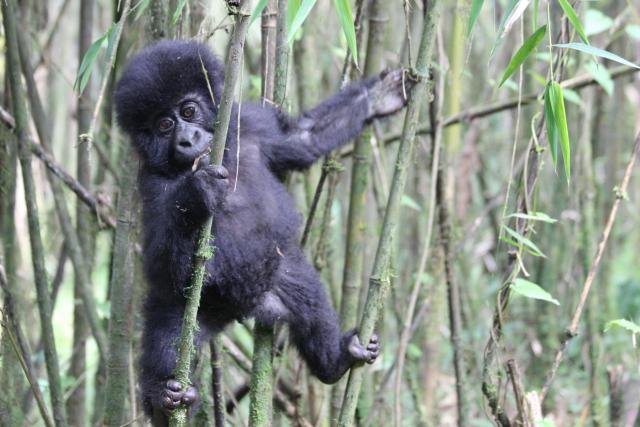
Result
Collaborative conservation efforts between WWF, IGCP, other partners, local communities and protected area authorities have seen the number of mountain gorillas steadily rise since the 1980s. The latest survey estimates that there are 1,063 wild mountain gorillas, an increase from fewer than 400 in the early 1980s.
This increase contributed to mountain gorillas moving from the ‘critically endangered’ to ‘endangered' category in the IUCN Red List of Threatened Species, in 2018.
The mountain gorilla story is something to celebrate. But work to protect and keep track of this iconic sub-species can’t stop there. Together, with local conservation teams and international support, we can help safeguard mountain gorillas and their forest home.
